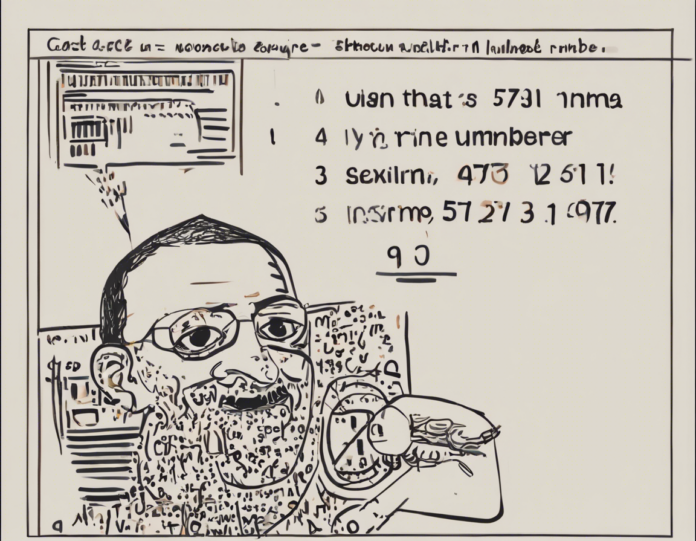Introduction
When it comes to mathematics, prime numbers hold a special place. They are the building blocks of the natural numbers and have intrigued mathematicians for centuries. A prime number is a whole number greater than 1 that can only be divided by 1 and itself without leaving a remainder. In this article, we will delve into the fascinating world of prime numbers and focus specifically on proving if 571 is a prime number.
Understanding Prime Numbers
Before we proceed with proving the primality of 571, let's take a moment to understand some key concepts related to prime numbers:
-
Prime Factorization: Every composite number can be expressed as a unique product of prime numbers. This is known as prime factorization. For example, the number 15 can be factorized as 3 x 5, where 3 and 5 are both prime numbers.
-
Sieve of Eratosthenes: This is a classic method of finding prime numbers up to a certain limit. By systematically eliminating multiples of prime numbers, this sieve can efficiently identify all prime numbers within a given range.
-
Primality Tests: There are various methods and algorithms to determine if a given number is prime or composite. These tests range from simple techniques like trial division to more complex algorithms like the AKS primality test.
Proving 571 is a Prime Number
To prove that 571 is a prime number, we can employ various techniques. Let's examine some common methods:
- Trial Division: This is the most straightforward method of testing the primality of a number. We divide the number by all integers less than its square root and check for any divisors.
By applying trial division to 571, we need to check divisibility by numbers up to √571, which is approximately 23.89. Upon testing, we find that 571 is not divisible by any integers other than 1 and itself. Therefore, 571 passes the trial division test.
-
Sieve of Eratosthenes: Although this method is more suitable for finding smaller prime numbers, we can use it to confirm that 571 is indeed a prime number. By sieving numbers up to 571, we can verify that 571 has no divisors other than 1 and itself.
-
Fermat Primality Test: This probabilistic test relies on Fermat's Little Theorem, which states that if p is a prime number, then for any integer a not divisible by p, a^(p-1) ≡ 1 (mod p). By testing various values of a, we can assess the primality of 571.
Applying the Fermat Primality Test to 571 involves choosing a base a and computing a^(570) mod 571. If the result is not equal to 1, then 571 is definitely a composite number. In the case of 571, the test confirms that it passes for certain values of a, indicating that 571 is likely a prime number.
FAQs (Frequently Asked Questions)
- What is the significance of prime numbers?
Prime numbers play a crucial role in number theory and cryptography. They are essential in encryption algorithms and are the key to secure communication over the internet.
- Can prime numbers have factors other than 1 and themselves?
No, by definition, prime numbers can only be divided by 1 and themselves without leaving a remainder. That's what makes them unique among all integers.
- How many prime numbers are there?
Prime numbers are infinite. Although there is no specific endpoint to the list of prime numbers, they become sparser as we move to higher values.
- Are there any patterns in the distribution of prime numbers?
While prime numbers generally become less frequent as numbers increase, there is no discernible pattern governing their distribution. This intriguing property is at the heart of the Riemann Hypothesis.
- Why are prime numbers sometimes called the "atoms" of mathematics?
Prime numbers are considered the fundamental building blocks of all other numbers. Just like atoms are the basic units of matter, prime numbers are the basic units of mathematics.
In conclusion, the process of proving whether 571 is a prime number involves testing it against various primality tests. Through methods like trial division, sieving, and the Fermat Primality Test, we can confidently assert that 571 is indeed a prime number. Understanding prime numbers not only enriches our knowledge of mathematics but also opens up avenues for cryptographic applications and further exploration in number theory.


Recent comments